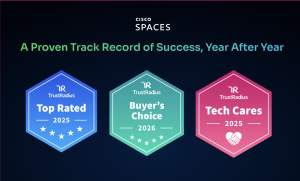
Indoor location services have revolutionized the way businesses operate. By leveraging indoor location analytics, businesses gain valuable insights that can help in strategic, data-driven decision making and driving specific outcomes. The industries where indoor location analytics is proving to be a game changer, include retail stores, stadiums, venues, as well as the hospitality and healthcare industries.
Indoor location services depend on Wi-Fi, beacons, bluetooth and other sensor technologies that are used to determine the location of devices. This enables businesses to get real-time information about their customers, employees and assets.
Five Business Use Cases Powered by Indoor Location Analytics
1. Customer Behavior Insights
Indoor location services provide businesses with a comprehensive overview of customer behavior, dwell times, frequency of visits, busy days of the week, and more. By collecting and analyzing data from indoor location sensors and beacons, businesses can understand customer behavior patterns and make data-driven decisions. For example, a retail store can identify popular areas within the store and optimize product placement accordingly. This helps improve efficiency and enhance the shopping experience.
2. Customer Experience & Safety
Real-time indoor location analytics enables businesses to track the real-time density of people in various spaces, ensuring safety by avoiding overcrowding and maintaining social distancing protocols. By monitoring real-time occupancy levels, businesses can make informed decisions to manage foot traffic effectively. Additionally, analytics allow for automatic adjustment of HVAC and lighting systems based on actual occupancy, thereby enhancing customer experience while reducing energy costs.
3. Retail Customer Profiling/Segmentation
By analyzing customer movement patterns and behavior through indoor location analytics, businesses can gain insights into customer demographics, preferences, and interests. This information can then be used to drive targeted marketing campaigns and develop personalized loyalty programs. For example, a shopping mall can identify frequent visitors and offer exclusive discounts or rewards to drive customer loyalty.
4. Operational Efficiency
By providing facilities teams with real-time data on customer traffic, businesses can make informed decisions on stocking, staffing, and resource allocation. For instance, a supermarket can optimize its inventory management by identifying peak shopping hours and ensuring sufficient stock availability during those times. This helps reduce costs and streamline operations.
5. Space Optimization
Analytics, both real-time and historical, enables real businesses to identify underutilized spaces and make informed decisions on space optimization. This could involve redesigning layouts, repurposing areas, or even consolidating multiple spaces into one. By maximizing space utilization, businesses can reduce overhead costs and enhance overall efficiency of space.
Indoor Location Analytics Through Cisco Spaces
In the realm of indoor location services, Cisco Spaces has emerged as a key player. Customers on Gartner Peer Insights reviewed it as the best indoor location services platform four times in a row. With its robust analytics platform, Spaces empowers businesses across various industries to harness the power of indoor location analytics and achieve success in their respective domains. Businesses can leverage this technology to gain a competitive edge and drive growth.
Learn more about the Cisco Spaces platform and how it provides indoor location analytics data for businesses.


